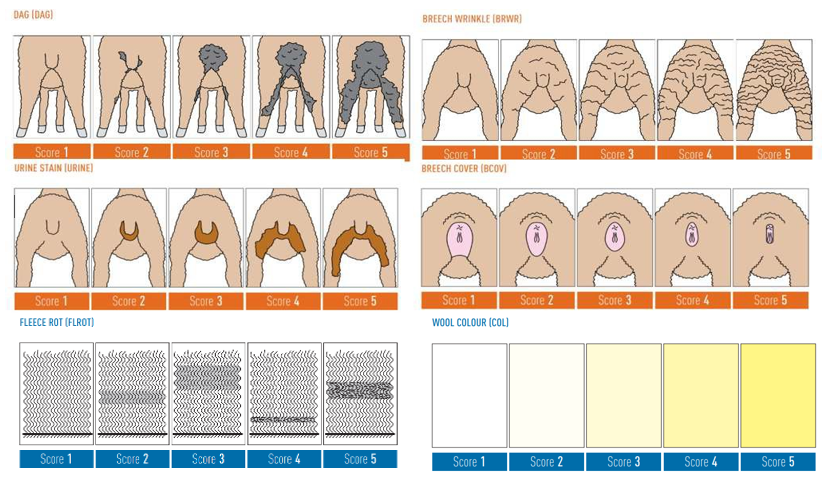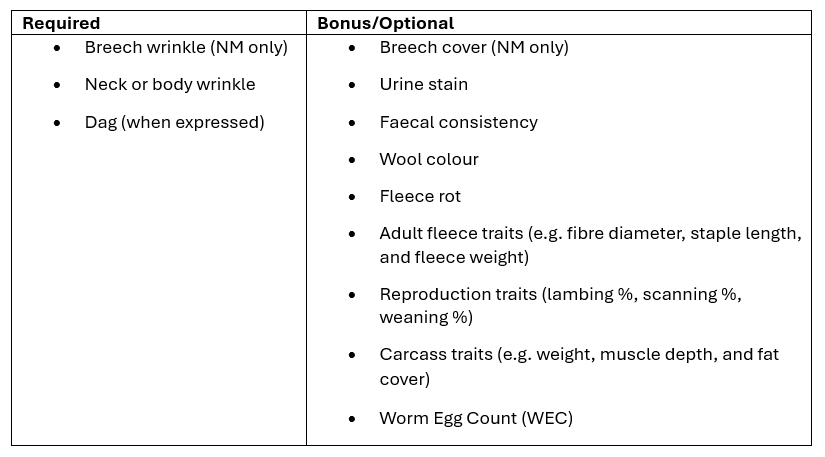Join the Merino Flystrike Reference Flock: On the Path to Genomic Prediction
Australian Wool Innovation (AWI) have put together a project which aims to create a Merino Flystrike Genomic Reference Flock. The purpose of this reference flock is to collect phenotypic and genomic data that will be used to establish breeding values for flystrike resistance. Currently, selection for flystrike resistance relies on observing indicator traits and their associated Australian Sheep Breeding Values (ASBVs). Such indicator traits are pictured below and include Dag, Urine Stain, Breech Wrinkle, Breech Cover, Wool Colour and Fleece Rot:
Pictured: Flystrike Resistance Indicator Traits
Will there be funding or assistance?
Eligibility to join the reference flock is assessed on a case-by-case basis. Funding is available to cover up to 50% of the cost of a 50K genomic test, and service providers, such as SheepMetriX, can assist with data collection and management.
Where do Merino producers fit in?
We are looking for producers to collect genotypes and related phenotypes, which will help establish Research Breeding Values (RBV) and once enough data has been captured and verified, ASBVs for flystrike resistance would be calculated.
Efforts are underway to consolidate existing data from various research projects, trials and on-farm sources, however not all animals in research flocks are currently genotyped. Currently there are 3,000 animals in the Flystrike Genomic Reference flock.
What data needs to be collected from animals in the Reference Flock?
Flystrike Traits:
Flystrike Occurrence: Yes or No.
Location of Strike: Note the specific area affected (poll, body, shoulders, or breech).
Treatment Date: Record the date when the animal was observed to be struck and treated
Preventative Treatment: Document the chemical applied, date of application and/or crutching date.
Mulesing Status: Has the fly struck sheep been mulesed or not.
Visual Traits:
For Breeders not putting data into MERINOSELECT, additional records include:
Sheep identification (eID, VID)
Sex (ewe, ram, wether)
Flock name/Stud name
Breeder name
Location
Pedigree (of struck sheep) including sire and dam - Full pedigree is preferred but not mandatory if flocks have a minimum of sire pedigree and well-recorded management groups and fixed effects.
Age
Management group (stud, commercial, pregnant, lactating, dry, joining groups etc)
Visit the AWI Visual scoring guide for specific details of when and how to capture this data or or contact the SheepMetriX team for assistance.
Opportunities to record/observe these traits:
Routine Inspections/ Mustering
Shearing and crutching
Joining, lambing and weaning
Next Steps – How to Get Involved?
· Contact the SheepMetriX team for more information.


